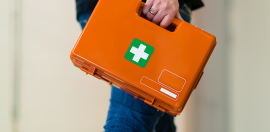Single Working Women Locked Out of Rental Market

4 October 2016 at 11:51 am
Single working women are being locked out of Melbourne’s rental market, with only 25 per cent of suburbs affordable today, compared to 50 per cent a decade ago.
New data analysis from Council to Homeless Persons found a woman on the average wage of $882 a week could only afford to rent a one-bedroom flat alone in 28 out of Melbourne’s 106 suburbs without suffering the rental stress of paying more than 30 per cent of a low income on rent.
In 2007 single working women could afford to rent in 52 suburbs. The suburbs which have become unaffordable over the past decade include Northcote, Brunswick, Preston, Essendon and Caulfield.
Council to Homeless Persons CEO Jenny Smith told Pro Bono Australia News gender inequalities made women particularly vulnerable in the rental market.
“Women still earn less money than men and have less superannuation than men,” Smith said.
“And many women have gone into the role of the bringing up a family and being in and out of the workforce, working part time, and then find themselves single later in life.
“Even young people now, if they’re working, just the impact of the rise in housing prices, which then flows down into the cost of rent means that the proportion of income that single women are having to spend on housing is higher than their income.”
She said the surprising finding from the analysis was housing affordability problem was creeping into new demographics.
“We all understand that we’re in a situation with housing in Australia that [for] people who haven’t got very much disposable income and very little savings, when a health issue arises or a loss of job or family violence or a relationship breakdown occurs, something like that tips you towards homelessness,” she said.
“But these figures show us that even a single woman on the average wage really can’t afford to live anywhere in Melbourne, and I think you’d see the same pattern around the country.
“I think at the moment, nationally, we don’t actually have a plan in place for tackling the unaffordability of housing, and the inevitable increase in the prices of housing pushes through to every part of the housing sector from people trying to get into homeownership as well as renters, and certainly we’re now seeing something that’s been a crisis for people at the lower end of the market now creeping into being the situation for average people.
“So in the absence of any federal plan to do anything about this, I think it’s inevitable that more and more it’s going to be the norm for us to be spending more on putting a roof over our head than we can afford.”
Smith called on governments to address the housing affordability crisis by changing current tax systems.
“We’ve really got to stop inflating the housing market through capital gains tax and negative gearing,” she said.
“We need state governments to be introducing inclusionary zoning where every time there is a housing development or redevelopment there is consideration for low-cost housing as part of those developments and redevelopments.
“And we need governments to be investing in social housing, we need to be housing our population effectively in order to be a healthy and productive community.
“And clearly it’s going to require leadership at both federal and state level.”









Try being a single mother of a toddler in Sydney when working two jobs is just enough to afford a one bedroom small flat. I.e. sharing a bedroom with my daughter and still paying 50% of my wage to rent…
One of the reasons we have a housing crisis is that we are taking too many Immigrants into Australia.
Australia takes in over 140,000 people each year. These Immigrants come to Australia in the hopes that they can start a new career but they are unable to do that without any local work experience. So in effect they are locked out of employment opportunities, and then they are placed on Centrelink